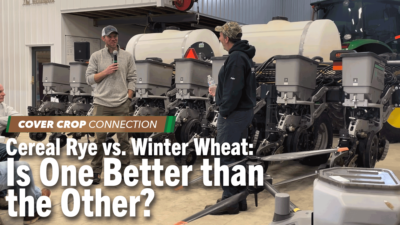Seeding Practices
[Podcast] Interseeding Means More Biomass
This week’s podcast, sponsored by GS3 Quality Seed, features Jason Cavadini, an agronomist at the University of Wisconsin Marshfield Research Station, in the second of a two-part series. Cavadini will discuss terminating interseeded covers, regrowth of cereal rye in the spring, how weather conditions affect cover crop establishment, and more.
Read More



